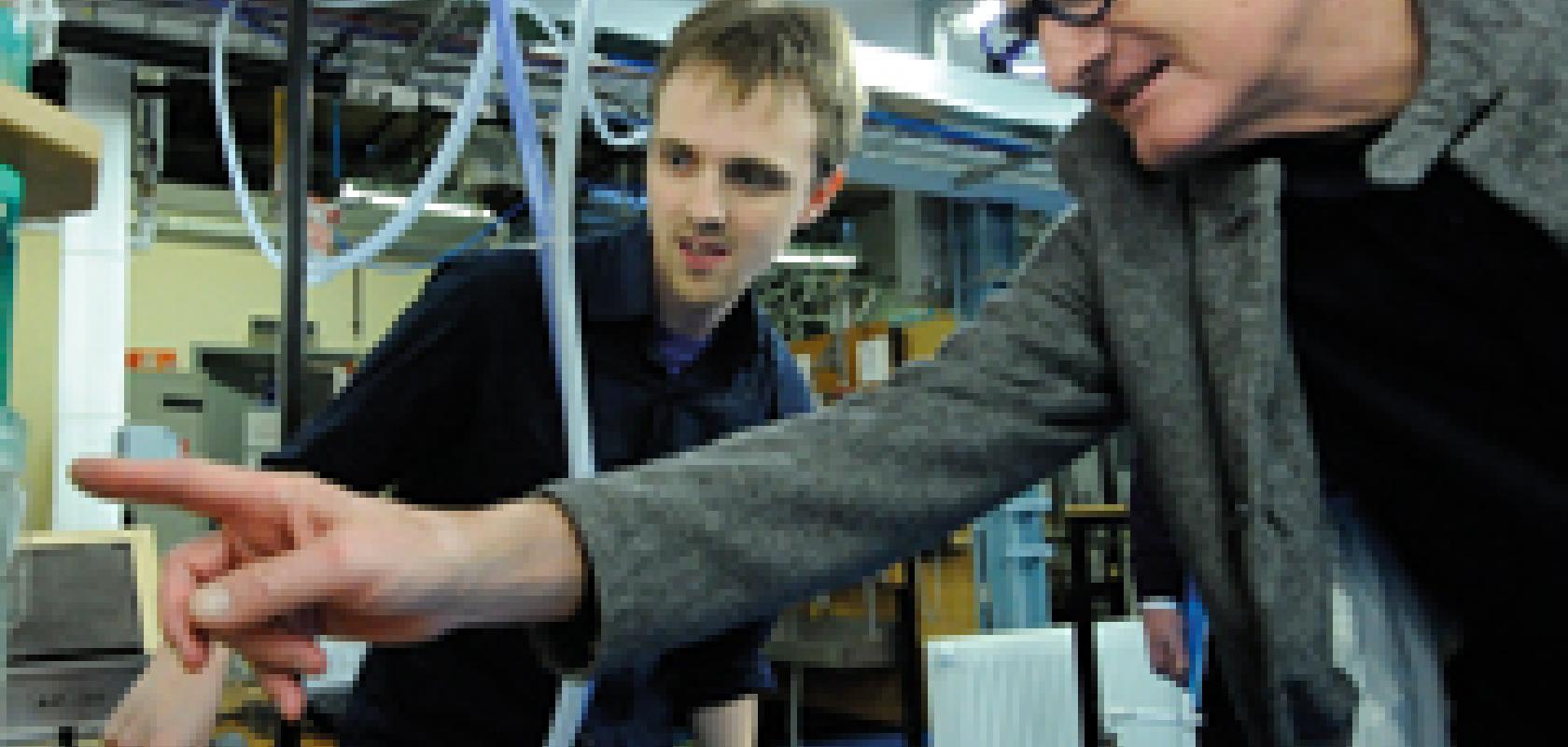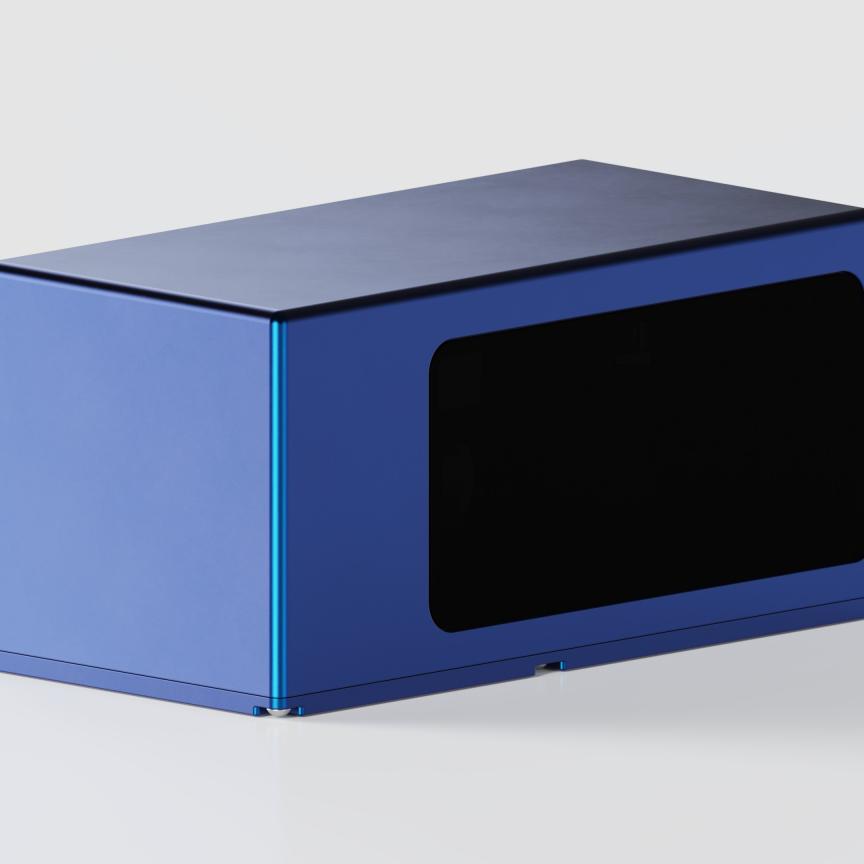The quality and performance of city infrastructure is essential for supporting economic growth, long-term sustainability and for boosting the quality of life for its inhabitants. Amid global challenges such as ageing populations, climate change, and population growth, modern city infrastructure must be robust and adaptable – as well as optimised in terms of efficiency, cost, low carbon footprint and service quality.
Sensor technology is being integrated into key structures within cities to help engineers understand a structure’s performance over time, and help determine the best way in which to manage and improve key elements of infrastructure. The technology is also helping make cities ‘smart’, whereby sensor and data management technologies are used to make cities more resilient, energy efficient and liveable.
In May, a new facility that will support world-leading research in the area of smart infrastructure was opened at the University of Cambridge. The James Dyson Building for Engineering contains fibre-optic sensors in its foundation piles that act as a ‘building nervous system’, offering live data of temperature and strain and therefore an insight into how the building is behaving.
‘To my knowledge, this is one of the densest ever installations of fibre optics in a building – we have two kilometres of fibre optics installed in a small section of a building, which gives us an unprecedented level of detail in terms of observing how the building behaves,’ said Dr Nicky de Battista, research associate at Cambridge University’s Centre for Smart Infrastructure and Construction.
According to de Battista, the purpose of having such a dense network of fibre optic sensors within the building structure is twofold. First of all, as part of Cambridge University’s Engineering Department, the new James Dyson building acts as an educational tool. ‘When students are learning in the classroom about what a beam does when you put a load on it, students can actually be taken into the James Dyson building…. The lecturer can show, in real time, what a group of 20 students standing on a beam can do to the beam itself. So, that’s the first objective, to have a sort of “living classroom”,’ he said.
The second objective is to observe any long-term changes to help engineers understand how buildings of this type behave, which could lead to revisions of the way buildings are designed. ‘It helps with the long-term understanding of a structure’s performance,’ de Battista added.
In addition to research purposes, Cambridge University’s Centre for Smart Infrastructure and Construction (CSIC) has integrated fibre optic sensors for ‘real-world’ projects, such as in bridges for the UK’s Network Rail, and tunnels for Crossrail, a new high-frequency, high-capacity railway for London and the south east of England.
Monitoring through the use of fibre optic sensors can be carried out for short periods – for example during parts of the construction phase – or for longer durations, such in the case of the Network Rail bridges, for determining how train loads affect the structure’s performance over the bridge’s lifetime.
‘This [long-term] monitoring will give you a kind of “health passport” of the bridge, which shows its structural performance before it was commissioned, and which can then be compared to data collected at stages throughout the life of the bridge,’ explained de Battista.
In the future, this fibre optic sensing approach is expected to be employed in more structures to support the construction and management of city infrastructure, although, according to de Battista, it is more likely to be useful within structures such as tunnels and bridges, where there is a higher level of doubt concerning the structural performance over time.
‘The more uncertainty there is in a structure, the more need there is for this kind of instrumentation,’ noted de Battista. ‘This is one of the reasons why a lot of our projects have been in underground structures – for example foundations and tunnels – because there is a lot more uncertainty there.’
The fibre optic sensors integrated in both the railway bridges and the new Dyson building use two technologies: Brillouin phase distributed strain sensing, and fibre Bragg gratings with point sensors.
Fibre Bragg gratings allow engineers to obtain point measurements of strain, whereas the Brillouin distributed technology enables continuous measurement of strain along the layout of the fibre optic cable. Because these technologies are embedded within the structure, they can be used to create a map of strain of the bridge, building or tunnel in question. ‘This [map] is the same as what is produced when an engineer designs a building with a finite element software package – they predict the strength of the structure of the building, and they create a colour coded map,’ explained de Battista. ‘But we are actually doing this in reverse – we can identify what is happening inside the building in real time, and present the findings in the same way.’
To take a measurement, the end of fibre is plugged into a fibre optic analyser, which sends pulses of light into one end of the fibre at a rate of a few thousand pulses per second. For each pulse, the analyser measures the amount of back scattered light returning to it.
By measuring the time it takes for the back-scattered light to reach the analyser, the location of the back-scattered reflection can be determined. ‘Essentially, what the analyser is reading is the Brillouin frequency of each specific location along the fibre – let’s say at five-centimetre intervals,’ said de Battista.
‘If at any point the fibre has stretched a little bit, then we will be able to see that the Brillouin frequency of the back-scatter coming from that particular location has shifted, because the Brillouin frequency is proportional to the strain and temperature within the fibre,’ he said.
The data obtained from approaches such as these can help engineers make informed decisions about a structure’s design, construction and maintenance, based on reliable evidence. For example, the fibre optic sensors integrated into four Crossrail sites by the CSIC provided new insights into the behaviour of the shaft linings and retaining walls during construction. According to the CSIC, ‘rationalisation of design approaches for shafts and retaining walls, based on actual observed performance, will be of direct economic benefit to city infrastructure, leading to more efficient designs, reduced amounts of material and faster construction.’
The CSIC led the development and installation of the fibre optic sensors at four Crossrail locations, working with the UK’s Knowledge Transfer Partnership (KTP), and which was funded by both Crossrail and Innovate UK.
Smart cities
It is evident that this type of monitoring infrastructure – be it tunnels, bridges, roads, railways, or buildings – can help with engineering, maintaining and upgrading the key elements that keep a city running.
It’s all part of what governments in Europe, and across the world, are trying to achieve in creating ‘smart cities’ – a concept whereby traditional networks and services are made more efficient with the use of digital and telecommunication technologies.
A smart city translates into better public services for citizens, better use of resources and less impact on the environment, through the creation of smarter urban transport networks, upgraded water supply and waste disposal facilities, safer public spaces, and more efficient ways to light and heat buildings.
The European Union is investing in ICT research and innovation and developing policies to improve the quality of life of citizens and make cities more sustainable in view of Europe’s 20-20-20 targets (20 per cent increase in energy efficiency, 20 per cent reduction of CO2 emissions, and 20 per cent renewables by 2020).
Smart sensors require the synchronisation of many different technologies, not least of all sensing, communication and computing.
A smart sensor obtains data from the physical environment and uses built-in compute resources to process and transmit data, and even perform predefined functions. At the very least, these sensors contain a detector, a microprocessor and communication technology.
‘One challenge in designing these types of sensors is that they often require a multidisciplinary team to work together due to the multiple physics involved in the design,’ said Christopher Boucher, technical product manager of Ray Optics at simulation software company Comsol. ‘And… the integration of communication devices in real life may not be described by one ideal environmental condition.’
One tool aiding designers in creating these more complex sensors is simulation software. ‘Comsol Multiphysics and its Application Builder provides simulation experts with the tools needed to turn their detailed physics and mathematical models into easy-to-use simulation apps for use by everyone in their organisation, so that different teams can have easy access to the analysis results,’ Boucher added.
An example of where optical sensors are being used for ‘smart’ applications is for measuring air quality, according to Jack Bennett, senior sales engineer at Hamamatsu Photonics. ‘Air quality… is of interest for smart cities. For example, cyclists could be notified via an app of areas of poor air quality and take a different route, or even autonomous vehicles could use this data to organise the routes everyone is taking,’ he said. ‘Buildings could detect health hazards and react to them. Monitoring air quality does not actually improve the air quality, but clearly it makes people aware of the problem and offers ways to intelligently start to improve the overall air quality.’
Researchers from CEA-Minatec, a research facility based in Grenoble, France, have designed a demand-controlled ventilation (DCV) system containing silicon-based MEMS CO2 sensors. These systems monitor occupancy levels and air quality so that the ventilation system draws in only the amount of fresh air actually needed. Such methods can often drop energy consumption associated with ventilation by more than half compared to a fixed rate of air intake.
For these CO2 sensors to function, a filament is heated to a specific temperature so that it emits most of its infrared radiation near a specific wavelength. The ambient CO2 absorbs much of this energy while the remaining infrared radiation is detected to allow calculation of CO2.
The main focus of the CEA-Minatec’s research was to find the optimum geometry for an energy-efficient filament, the sensor’s primary energy consumer, and Comsol Multiphysics was used for optimising the design of the filament to avoid hot spots on the freestanding micro hotplate. This helped in making the CO2 sensors smaller, less expensive, and run on a very low current so that they can be left in a building for many years without the need to replace batteries.
Absorption spectroscopy is another common technique for analysing the quantity of gasses in the air, which is being made possible by more affordable, efficient and long lifetime mid-infrared LEDs, as well as cheaper and more eco-friendly InAsSb detectors, Bennett said. Hamamatsu supplies such components, as well as tunable filter technology, which allows near-IR or mid-IR spectroscopy in a compact and low cost set-up. The MEMS-FPI spectrum sensor, for example, incorporates this tunable filter technology and a compound infrared detector such as InGaAs.
The fibre optic sensors in the James Dyson building are not technically ‘smart’ yet, as they do not contain onboard technologies to process or transmit data – measurements are taken at set times and compared. According to de Battista, it would be possible to incorporate onboard processors or WiFi in the future, but these technologies will have to improve somewhat in cost, efficiency and performance before they are used.
‘In the future [the fibre optic network] could be turned into an online, continuous monitoring system, because the fibre optic sensors are going to be there throughout the whole life of the building,’ he noted. ‘The technology of the fibre optics will not change; it’s the technology of the instrumentation that you put on the outside of the fibre optics that will improve.
‘The fibre optic sensors have also been designed with future technology in mind, technology that we do not know of yet. But as the other technology improves we can add more functionality into the sensing system.’


